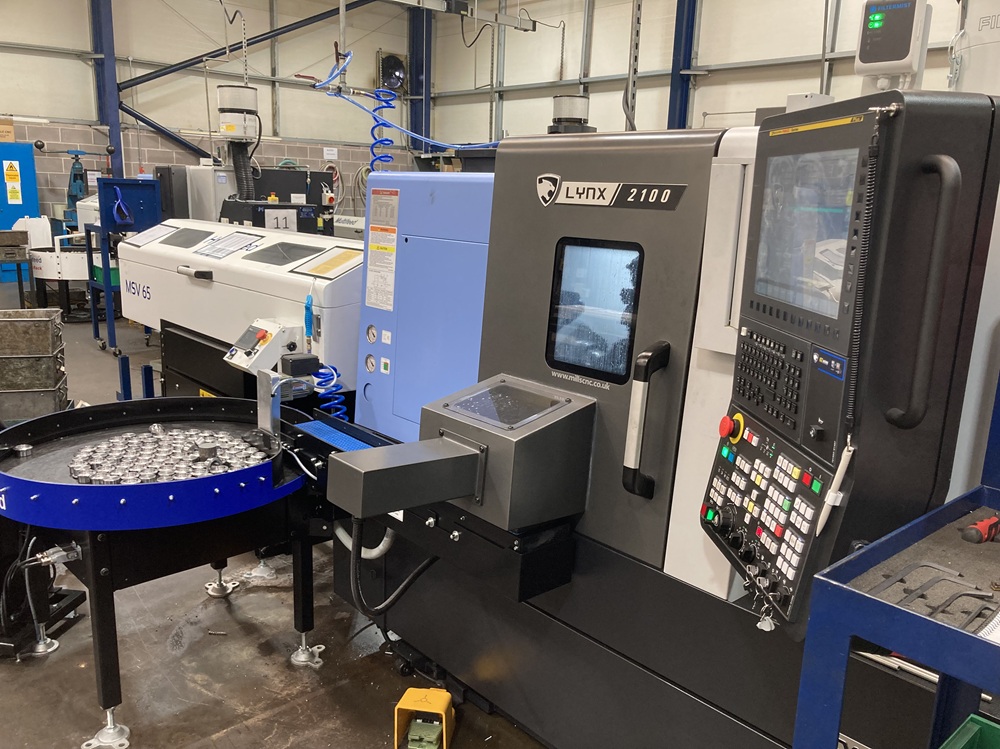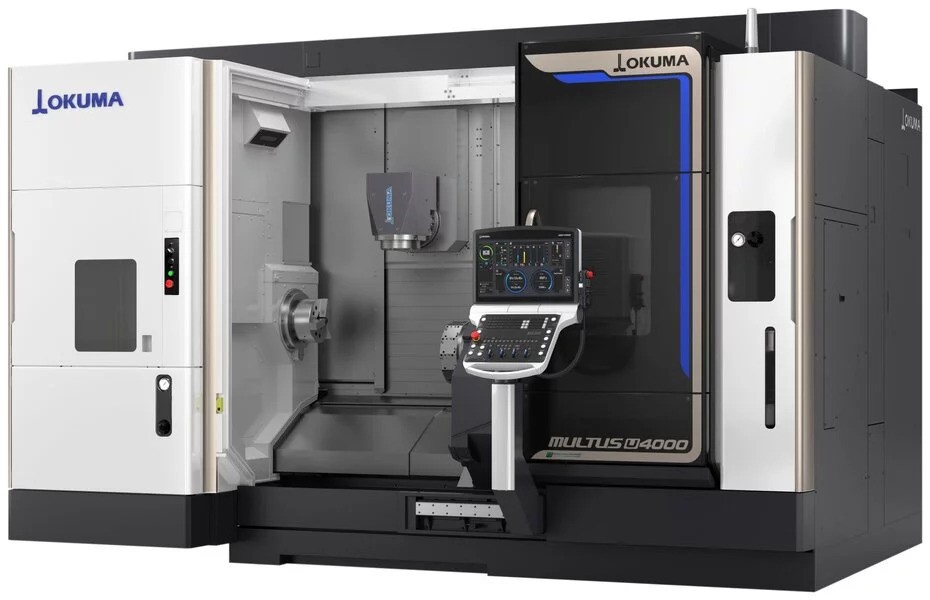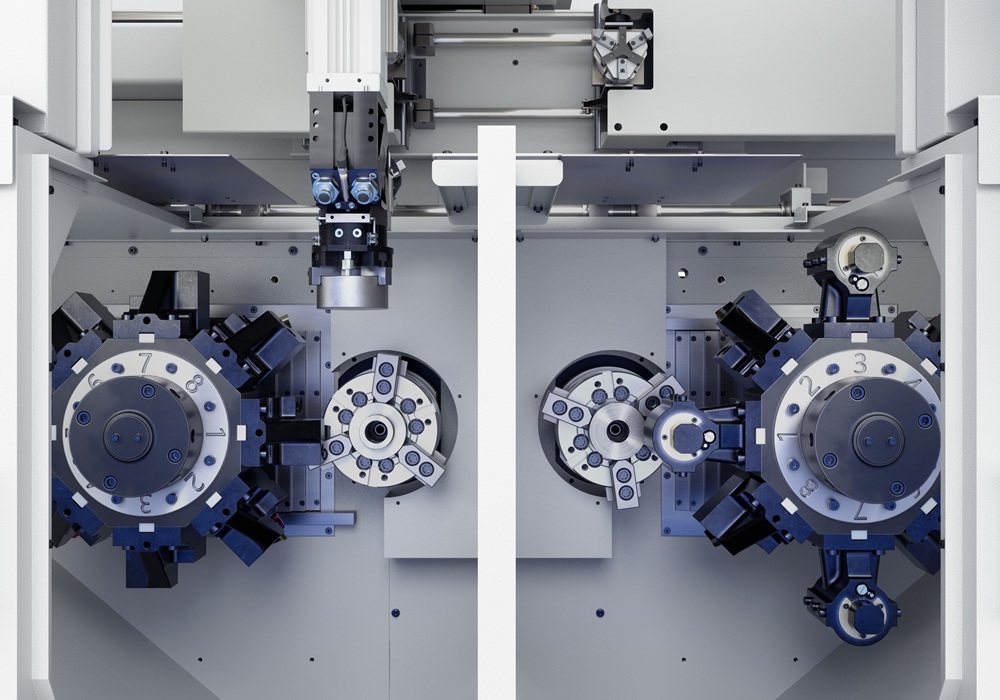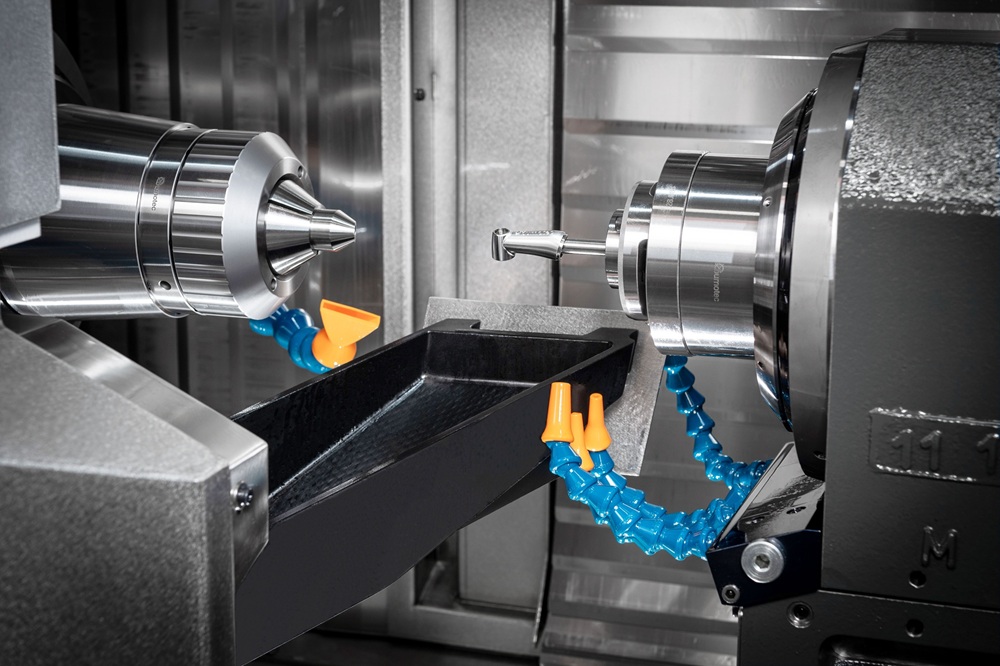Mills CNC has recently supplied Alwayse Engineering, a ball transfer unit (BTU) design and manufacturing specialist, with a new two-axis lathe manufactured by DN Solutions. The lathe, a FANUC-controlled 8” chuck/65mm bar diameter Lynx 2100B, was installed at Alwayse Engineering’s manufacturing facility in Birmingham in March 2025. As part of the investment package, the machine was supplied with a HydraFeed MSV65 short magazine bar feeder to facilitate unattended production, and a HydraFeed Rota-Rack parts accumulator and handling system with integrated belt conveyor.
Since installation, the Lynx 2100B has been put through its paces machining single-piece carbon steel bodies for the company’s re-designed and “soon-to-be launched” 805 series BTUs. Of low-profile, high-load capacity and heavy-duty design, the 805 series is primarily for air cargo movement applications.
Alwayse Engineering’s 805 series unit bodies measure 62 mm in diameter and 34.5 mm in length, with machining taking place in a single set-up on the Lynx 2100B. Machining operations include (front end) rough and finish boring of the bodies’ interiors to produce the desired internal ‘hemisphere-shape’, and (back end) burr-free, parting-off operations to cut off the machined parts from the remaining bar stock.
Part cycle times are short at approximately 80 seconds and, once machined on the Lynx 2100B, the bodies are finish machined on one of the company’s other Lynx lathes where a series of multi-dirt exit holes are produced on the bottom of every unit.
Says Richard Cutler, engineering manager at Alwayse Engineering: “DN Solutions and Doosan machines are proven performers and have significantly improved our in-house machining capacity and capabilities. Our Lynx lathes deliver the accuracy, repeatability, fast processing speed and machining flexibility we need to increase productivity.”
More information www.millscnc.co.uk



















